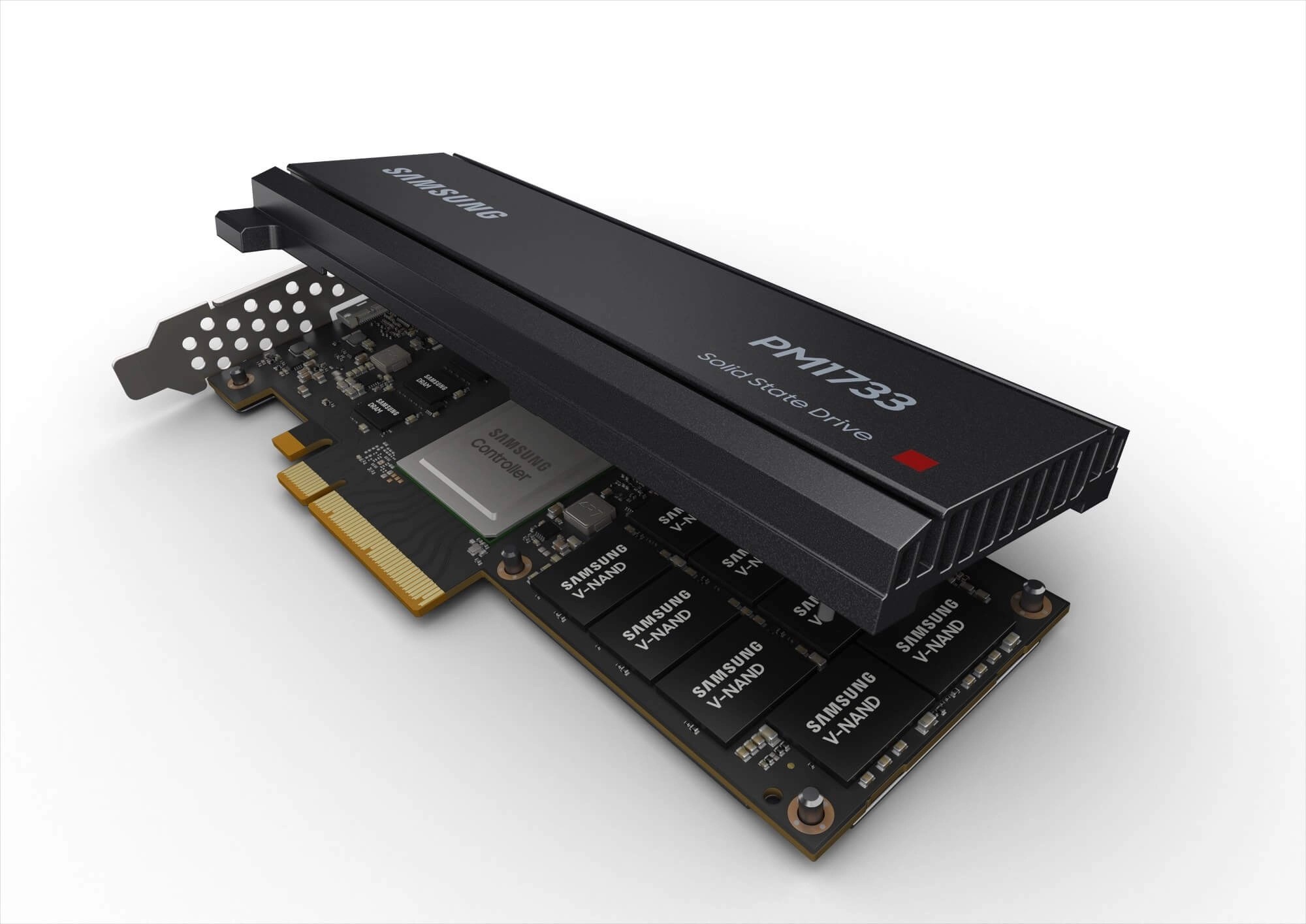What You Need To Know About PCIe SSD
In this tutorial, we will be explaining everything you need to know about PCIe SSD (PCIe solid-state drive). Click the link to read full guide.
Author:Daniel BarrettFeb 24, 20234556 Shares151874 Views

A PCIe SSD (PCIe solid-state drive) is a high-speed expansion card that attaches a computer to its peripherals. PCIe, a Peripheral Component Interconnect Express, is a serial expansion bus standard. In this tutorial, we will be explaining everything you need to know about PCIe SSD.
PCIe slots can have different sizes based on the number of bidirectional lanes connected. As a result, PCIe SSD storage is an alternative to a server-side flash deployment.
It also serves as the underlying transport layer for data on graphics cards or add-in cards. PCIe SSDs integrate flash directly on a server motherboard.
Each PCIe device connects to the host through its serial link, eliminating the need to share a bus. In addition, the point-to-point architecture lowers latency and boosts data transfer speeds between a server and storage.
How Much Faster Is A PCIe SSD?
The current iteration of SATA is SATA III. It supports a theoretical top speed of 6 Gb/s, about 600 MB/s of data transfer.
PCIe is a little more complex to break down. First, there are PCIe 1.0, 2.0, and 3.0 sockets. Version 3.0 is the newest, but version 2.0 slots are found on some motherboards.
If the board is a PCIe 3.0 board, you must factor lanes. This is because PCIe connections are split into lanes. There are usually four-lane, eight-lane, and 16-lane sockets, and you can identify these by size on the board.
The large 16-lane ones are where a graphics card is plugged in.
Solid State Drive
PCIe 3.0 has a theoretical speed of 1 GB/s per lane, meaning a PCIe 3.0 x16 socket has a theoretical cap of 16 GB/s.
That’s a high amount of speed for a hard drive. Of course, a usual PCIe SSD more likely uses four or eight lanes, but the potential is still better than SATA.
Those numbers are theoretical and not what your practical performance will look like. Of course, if you look at real SSDs, the speeds advertised are more grounded, but the benefit is still evident.
Also read: USB 2.0 Vs. USB 3.0: What Is The Difference?
The Samsung 860 EVO claims a max sequential read speed of 550 MB/s and a max sequential write speed of 520 MB/s.
The closest comparable PCIe drive, the Samsung 960 EVO, has a 3.2 GB/s max sequential read speed and 1.7 GB/s max sequential write speed. However, it only uses four PCIe lanes.
NVMe and M.2
Two more terms are discussed with PCIe drives: NVMe and M.2.
M.2 refers to a PCIe form factor designed specifically for SSDs. It’s more compact than standard PCIe and only accepts M.2 form factor devices, exclusively hard drives.
M.2 was designed to provide an interface to allow SSDs to use a PCIe interface without interfering with or taking slots from more typical PCIe devices like graphics cards.
M.2 is also common in laptops because it usually lies flat into the motherboard, taking up little space.
NVMe stands for Non-Volatile Memory Express. Non-Volatile memory is any storage memory. Volatile memory refers to something like RAM that’s overwritten continuously and doesn’t remain after a reboot.
NVMe is a protocol designed specifically for PCIe hard drives to allow the drives to communicate quickly. The goal of NVMe is to get SSDs to behave more like RAM because RAM uses similar technology and moves faster than SSDs.
Differences Between PCIe SSD And SATA SSDs
As previously discussed, PCIe-attached SSDs avoid the bottlenecks associated with SATA or SAS-attached SSDs. In addition, the number of PCIe lanes per SSD determines the speed of data transfer.
A 16-lane device built on the PCIe 3.0 specification can support approximately 32 gigabytes per second. By contrast, SSDs built with a SATA III controller provide a maximum transfer rate of 600 megabytes per second.
The SATA v3.2 specification defines SATA Express connectors for host and device connectors supporting SATA and PCIe protocols.
SATA SSDs have much better hardwarecapabilities, but they have worse relative performance. While it offers speeds of 600MB/s, it is not nearly as fast as the speeds offered by PCIe SSDs.
PCIe is likely the most efficient option if the maximum performance for frequent file transfers is needed. However, if budget is a concern, SATA is much more cost-efficient as it tends to be the cheaper option.
PCIe SSD Drawbacks
The PCIe multipurpose bus carries varied data to the processor. Despite its inherent performance benefits, PCIe SSDs have a higher cost per gigabyte than traditional SSDs.
The lack of standard storage commands is another drawback. PCIe SSD device makers are required to write and qualify a custom software driver for operating systems.
PCIe SSDs also tend to have a much shorter battery life. However, if an individual is browsing the web, sending emails, or doing something that may be CPU or RAM intensive, they may not notice much of a difference between SATA and PCIe SSDs.
If you found this article helpful, kindly leave a comment in the comment section.
Editor’s picks:

Daniel Barrett
Author
Latest Articles
Popular Articles